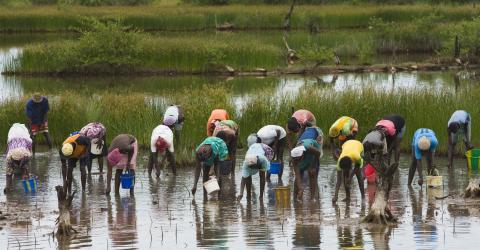
The Ramsar List
A key commitment of the Convention on Wetlands' Contracting Parties is to identify and place suitable wetlands onto the List of Wetlands of International Importance, also known as the Ramsar List.
The Contracting Parties confirmed in 2005 that their vision for the Ramsar List is “to develop and maintain an international network of wetlands which are important for the conservation of global biological diversity and for sustaining human life through the maintenance of their ecosystem components, processes and benefits/services”.
Today, the Ramsar List is the world’s largest network of protected areas. There are over 2,500 Ramsar Sites on the territories of 172 Convention Contracting Parties across the world, covering more than 2.5 million square kilometres.
The network of Ramsar Sites is truly global, and includes coastal and inland wetlands of all types in all six Convention on Wetlands regions.
The world’s first Site was the Cobourg Peninsula in Australia, designated in 1974. The largest Sites are Rio Negro in Brazil (120,000 square kilometres), and Ngiri-Tumba-Maindombe in the Democratic Republic of Congo and Queen Maud Gulf in Canada; these Sites each cover over 60,000 square km. Others are as small as one hectare.
The countries with the most Sites are the United Kingdom with 176 and Mexico with 144. Brazil has the largest area with 267,000 square km under the Convention protection; Bolivia, Canada, Chad, Congo, the Democratic Republic of Congo and the Russian Federation have also each designated over 100,000 square km.
The Ramsar Sites Information Service
The Ramsar Sites Information Service enables Contracting Parties to complete online Ramsar Information Sheets (RIS) for newly designated Sites and Site updates.
You can access Site summaries by country in the country profiles on this website; or search for Sites by country, wetland type and other criteria in the Ramsar Sites Information Service database.